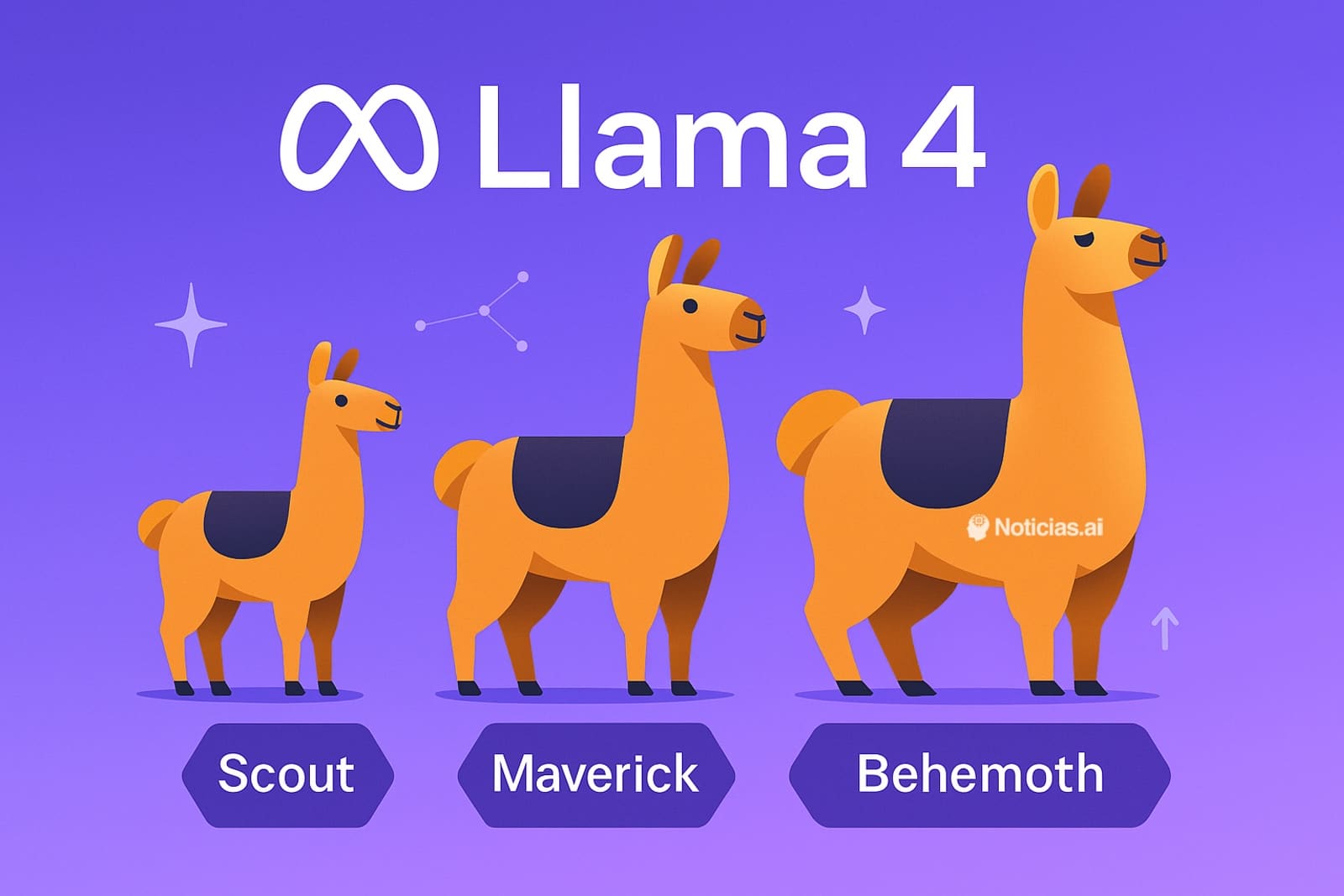Meta has officially unveiled its roadmap for the Llama family of language models during the LlamaCon 2025 conference, positioning its open-source artificial intelligence initiative as a strategic pillar. With Llama 4, the company not only announces a technical evolution but also a radical approach to democratizing AI, directly challenging the closed and proprietary models that currently dominate the market.
Llama 4: Faster, Multilingual, and with Expanded Context
The new Llama 4 model promises substantial improvements in speed and comprehension. Meta claims that its conversational performance has notably accelerated, resulting in smoother interactions. Its significant leap, however, is the compatibility with over 200 languages, paving the way for true global accessibility.
Another key advancement is its context processing capability, featuring a window that could encompass information volumes as extensive as the U.S. tax code. This expansion allows for more complex tasks and more effective information retrieval, greatly widening the model’s real-world applications.
Models for Every Size and Budget
Meta has designed the Llama 4 range with scalability in mind. From the “Scout” model, which can run on a single Nvidia H100 GPU, to the imposing “Behemoth” for advanced infrastructures, the company aims to cater to independent researchers, startups, and large corporations alike.
The cost per token is among the lowest in the industry, and its performance surpasses that of other leading models in many tasks, according to data shared by Meta.
Real-World Applications: From Space to Medical Consultations
The versatility of Llama is already being demonstrated in real-world environments. The model has been deployed on the International Space Station to respond to queries without needing a connection to Earth. In healthcare, the “Sofya” assistant is reducing doctors’ consultation time. Companies like AT&T use it to enhance internal productivity, while marketplaces like Kavak integrate it to advise buyers.
Box and IBM have also backed Llama in business environments where privacy is key.
An Accessible, Open, and User-Centric AI
Meta offers a new API to facilitate model customization, allowing users to upload their own data, monitor training, and deploy tailored versions of the model. This flexibility represents a clear break from the closed model of other platforms.
Technical Advances and Active Community
The implementation of “speculative decoding” improves generation speed by 50%, with companies like Cerebras and Groq already optimizing Llama for their own hardware. This reflects the strength of the open-source community surrounding the project.
Visual AI and Advanced Segmentation Tools
Meta is also focusing on artificial vision. Tools like Locate 3D and the Segment Anything Model (SAM) are evolving toward more advanced capabilities to identify, segment, and track objects. SAM 3, hosted on AWS, will be launched this summer and promises practical applications such as automated pothole detection in cities.
Natural Conversations and Business Adoption
The philosophy of Llama is already spreading to traditionally complex sectors. Bloomberg has begun using it to respond to natural language queries on its financial terminals, and the Crisis Text Line organization employs it to analyze risks in emotional support text messages.
Future Challenges and Safe Model Distillation
Meta has also introduced tools like Llama Guard to ensure that smaller models — such as the upcoming “Little Llama” — maintain standards of safety and quality. One of the most relevant challenges is ensuring that these compressed models do not inherit vulnerabilities from their larger versions.
Conclusion: Open Source Gains Momentum
Llama 4 symbolizes the consolidation of open source as a dominant paradigm in AI. Meta envisions a future where artificial intelligence is fast, affordable, interoperable, and, above all, accessible. With practical applications already in operation and a global community of developers behind it, Llama is leading a wave of innovation that could redefine the balance of technological power in the coming years.

